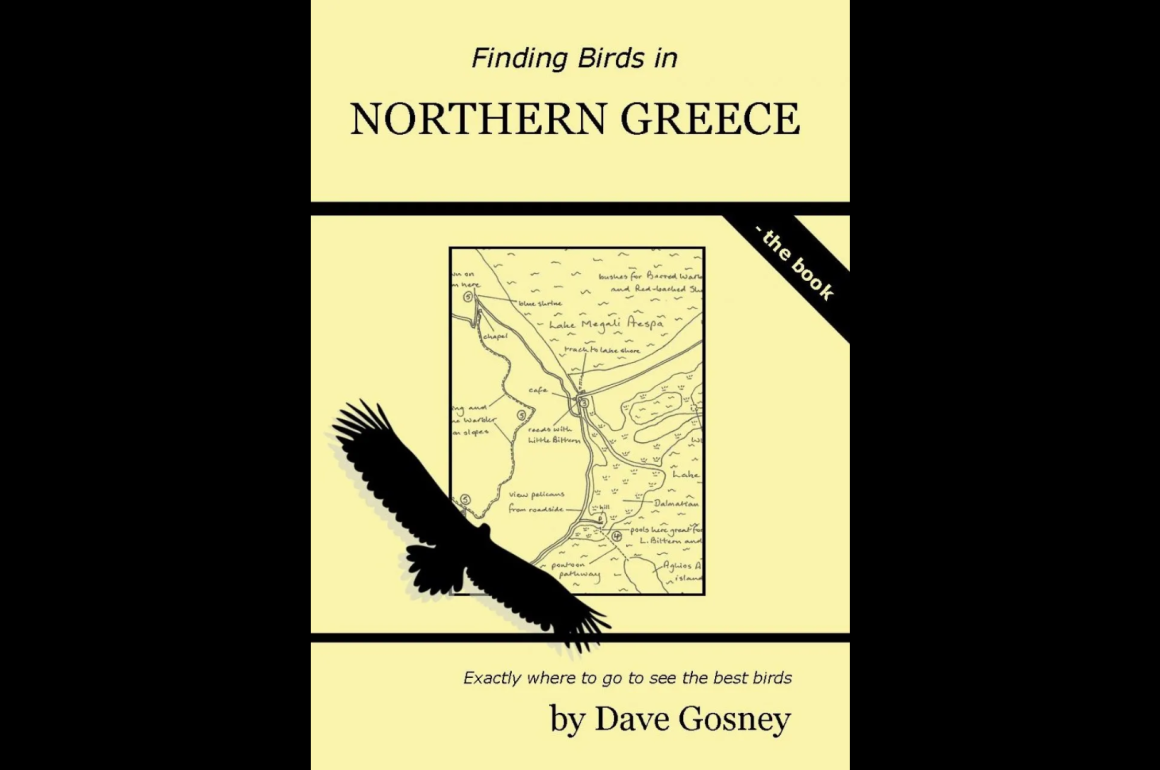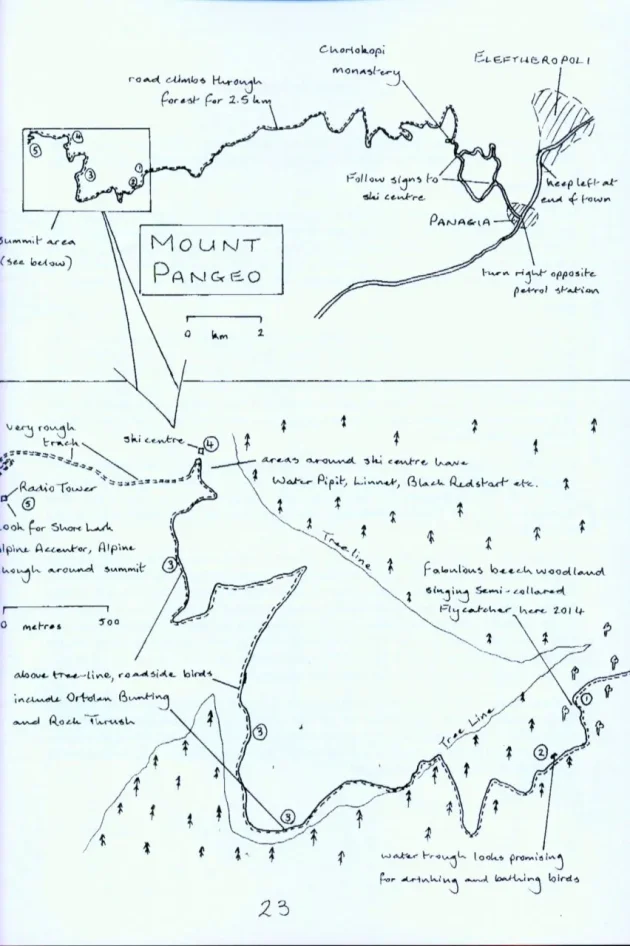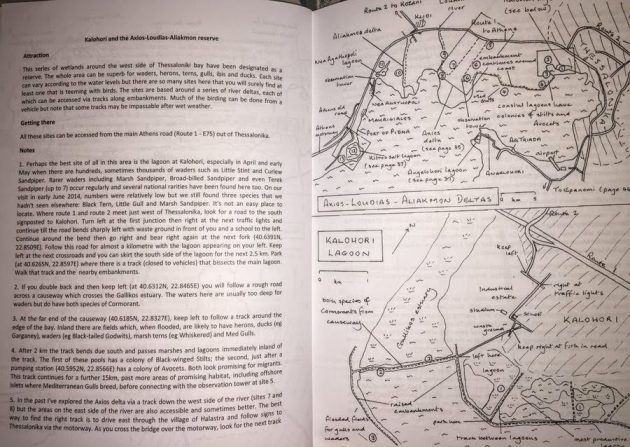
Dave Gosney’s Finding Birds Series covers mostly the Western Palearctic and describes birding in various regions of Portugal, Spain, Morocco, France, Finland, Estonia, Poland, Hungary, Romania, Bulgaria, Turkey, etc., with some additions, namely South Texas, The Gambia, and Goa (India). Afterwards, the individual site updates are available at his website findingbirds.com.
Finding Birds in Northern Greece (2015) covers the birdwise very best northeast of the country (provinces of Macedonia and Thrace), from the wetland border with Turkey all the way to the mountains and lakes at the triple border with Albania and North Macedonia. Based on a visit in spring 2014, this guide updates the previous Finding Birds in Greece (1993).
Gosney writes: ‘‘When I revisited northern Greece in 2014 I was reminded just how exceptional it is for birding. Nearby western Turkey may have some extra, more exotic species …, but the birding in Greece is much more enjoyable because of the far greater numbers of raptors, warblers, buntings, shrikes and, especially, waterbirds. The fact that I filmed over 100 species on one 3 week trip (compared with 60-80 at every other European area I’ve visited so far) gives you an idea just how exceptional this area is.”

Finding Birds in Northern Greece offers information on how to reach the best sites, detailed hand-drawn maps, and notes on what birds you might see once you get there. In 45 (very) concise, no-nonsense pages, this guide covers, east to west, the Evros delta, Avas gorge, Dadia forest national park (one of the best areas for raptors in Europe), Thimaria marsh, Lake Ismarida and the nearby Porto Lagos (a town surrounded by various lagoons), Mandria Beach marsh, Nestos delta (including exactly where to find the Spur-winged Plover), Nestos gorge (for the birds of rocky habitats), Mount Pangeo (a ski centre with various alpine species), Mount Vrontou (similar), Lake Kerkini (one of the best birding sites in Europe) and above it, Mount Belles (including exactly where to look for Rock Partridge and White-backed Woodpecker), Kalohori lagoon (a shorebirds site close to Thessaloniki), the interconnected Axios, Loudios and Gallikos deltas, Kitros lagoon, Angelohori lagoon (regular Slender-billed Gulls) and Epanomi lagoon (little-known wetlands near Thessaloniki), and the mountainous Prespa Lakes National Park. Yes, all this in mere 45 pages, half of them depicting maps!

But how can you pack so much in so few pages? Here is an example from Bulgaria guide: http://www.easybirder.co.uk/Pamporovo_map.html. Okay, this example hardly has much text (those published site guides have more detailed textual descriptions, but you can see the general layout), and the map looks like something from those early hippy guides to India, hand-drawn, spotty, difficult to follow with hard to read hand-written details.
This is more of a finding birds atlas, than a guide book (and I like it that way). I have three bird finder books for Greece, the other two are thicker and much more detailed, making for an excellent reading before the trip. Yet, despite my dislike of Gosney’s maps as they are (it is way past time to digitalise them), once in the field my book of choice still is Gosney’s little atlas: I do not want to read much while making quick roadside stops while driving.

That is a situation where I need an equivalent of a field guide, map on the right and relevant short and easy to follow description on the left hand page: getting there, GPS coordinates to help me find the right turnings or viewing points, and marked areas where particular birding specialties could be found. No more, no less. And that is why I recommend Dave Gosney’s no nonsense guides.
Last and least, another reason might be, they are so cheap that you need not think twice. So much so that I am considering buying three more Finding Birds guides.











Leave a Comment